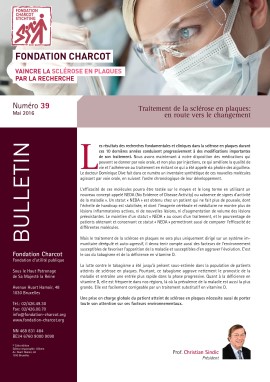We now have medicines which can be given orally and no longer injected. This improves quality of life and ensures better adherence to treatments by avoiding what is referred to as “needle phobia”. In this issue, Doctor Dominique Dive will provide a comprehensive overview about new molecules taken orally according to their chronological order of development.
The effectiveness of these molecules can be tested over the middle and long term using a new concept called NEDA (No Evidence of Disease Activity). A NEDA status is obtained in patients who are no longer experiencing flare-ups, whose level of disability has been stabilised and whose brain and spinal cord scans no longer show any active inflammatory lesions, new lesions or an increase in the size of pre-existing lesions. Maintenance of the NEDA status during treatment, and the percentage of patients reaching and maintaining the NEDA status will also enable comparison of the effectiveness of the various molecules.
However, multiple sclerosis treatment must no longer focus solely on the disturbed and auto-aggressive immune system. It must also take into account environmental factors which may be facilitating the appearance of the disease and which have the potential to aggravate the condition. This is the case of smoking and vitamin D deficiency.
Until now, the fight against smoking has been underestimated in the patients’ population suffering from multiple sclerosis. However, tobacco use clearly aggravates the disease’s prognosis and leads to a more rapid onset of the progressive phase. Vitamin D deficiency also is common in our regions where the disease is also more prevalent. It can be addressed quite easily with a vitamin D substitution treatment.
Overall care of patients suffering from multiple sclerosis should also take into account these environmental factors.
Professor Christian Sindic, Chairman

